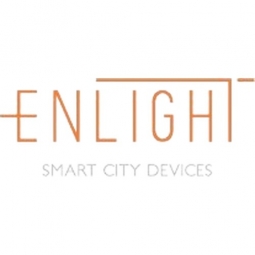Smarter, Safer, and More Cost-Efficient Lighting Environments with Enlight

- Networks & Connectivity - RF Transceivers
- Sensors - GPS
- Sensors - Optical Sensors
- Smart Lighting
Few areas draw as much attention, time, and budget scrutiny as the network of thousands of street lights deployed in every urban environment. From safety concerns arising from broken bulbs to escalating energy costs and maintenance headaches, street lights are a hot-button issue for government administrators, law enforcement personnel, and, of course, constituents. Furthermore, Cities are increasingly handing-over street lighting operations to external partners under a determined Service Level Agreement, which performance is appraised using Key Performance Indicators that have to be measured and recorded. Aiming to turn this challenge into opportunity, Enlight – a name that underscores the company’s commitment to energy and lighting solutions – has devoted its business to developing and producing smart networks of street lights in urban environments – from streets and avenues to parks, playgrounds, and plazas. According to Miguel Lira, general manager for Enlight, new technologies continue to evolve and municipalities want to do more than turn lights on and off. They want full smart solutions for monitoring and controlling energy, and managing maintenance. “At first, we just provided basic services to manage street lights – just turning them on and off,” he said, “but as new technologies emerged, we were soon integrating hardware, software and finally producing smart lighting devices. But as the sophistication of these devices grew, so did our need for bandwidth to transmit more secure data at faster speeds and with greater reliability.” Previously, Enlight installations tapped into the actual electrical cable power the street lights as the communication channel. “At the time, RF communication was not reliable, stable, or well-developed,” Lira said, “but the powerline was noisy and not fully reliable.”
As municipalities need richer functionality and granular controls, such as photo-sensors to measure dawn/dusk light (or adverse weather) and dim or raise lights, Enlight began to build its own devices. Today, Enlight devices meter all electrical parameters of a light and they can send notifications about burned-out bulbs or other maintenance issues. “We decided the best approach would be to build our own devices with smart sensors and networking,” Lira said. “We also created a smartphone app to simplify pinpoint installations based on GPS coordinates and test the lights by turning them on and off from the phone in the field.” When it came time to select networking components, Lira said, Digi rose to the top. “We were looking for a supplier that could handle our communications needs,” he said. “Digi had all of the criteria we were looking for. We needed the ability to easily implement our own protocol in RF – Digi had it. We needed to deploy mesh networks – Digi had it. We needed the flexibility to switch between 2.4 GHz and 900 MHz – Digi had it. We wanted high speed and low latency – and Digi had it.” The Enlight engineering team requested samples and a development kit and quickly found success. “We started working with it and realized, ‘Wow, this very easy to do.’ We were able to implement our solution with Digi – integrating our protocol using the Digi API framework. It was fast and easy to create our own communication card for our smart lighting devices based on Digi. We're very happy with the outcome.”
Related Case Studies.
.png)
.png)








.png)
